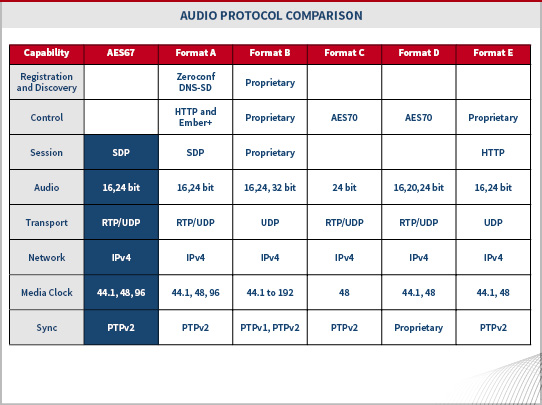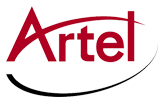The following is an excerpt from “IP Audio and Intercom: Connecting, Converting and Switching for Production” presented at the SMPTE New York Section meeting in June by Rafael Fonseca, Vice President Product Management,.
Digital audio technology, first introduced in the 1970s, has advanced over the years from traditional AES-EBU and MADI to CAT5, Ethernet, and now “True IP” with solutions such as Dante®, QSC Q-Lan®, WheatNet®IP, Livewire +®, and RAVENNA®, integrating key components of the AES67 and SMPTE 2110-30 standards to support real-time broadcast applications. These solutions support uncompressed audio, 48kHz audio sampling, 24-bit sampling, and UDP for VoIP transport, and surfaced in the absence of industry wide standards in response to complete audio networking needs.
Networks built around “True IP” allow the connections between audio devices from microphones to switchers to pass through standard networking equipment including switches, routers, firewalls, etc. IP also works with common network protocols such as IGMP Multicasting and VLANS providing additional flexibility and control. True IP can also coexist with other IP traffic from video, file transfers, webpages, and more. And because the timing is carried within the IP network, there’s no need to sync distribution.
As the industry pushed toward standardization and interoperability between solutions, the need for a “lingua franca” to go between solutions was defined. This became known as AES67, allowing high-performance audio-over-IP interoperability. Below is a chart outlining how AES67 “normalizes” between solutions to assure interoperability. It is important to note that AES67 is not a solution but an “interoperability tool”.

IP ecosystems are now emerging throughout the broadcast and pro-audio industry. Standards and solutions like the ones listed above have had a major impact in audio over IP gaining strength as equipment manufacturers support interoperability. As applications become larger in scale and complexity, industry leaders are starting to assimilate to more traditional IT networks and work up the internet protocol stack. These trends point at the need for managed and PTP-aware switches to enable operation within a given solution or between different solutions in the areas of networking, traffic management, and media synchronization.
To learn more about PTP, Artel offers the following two white papers:
It’s About (Precision Time) – A primer on PTP
Time Travels: A Closer Look at PTP
Related Products: Quarra PTP Ethernet Switches

